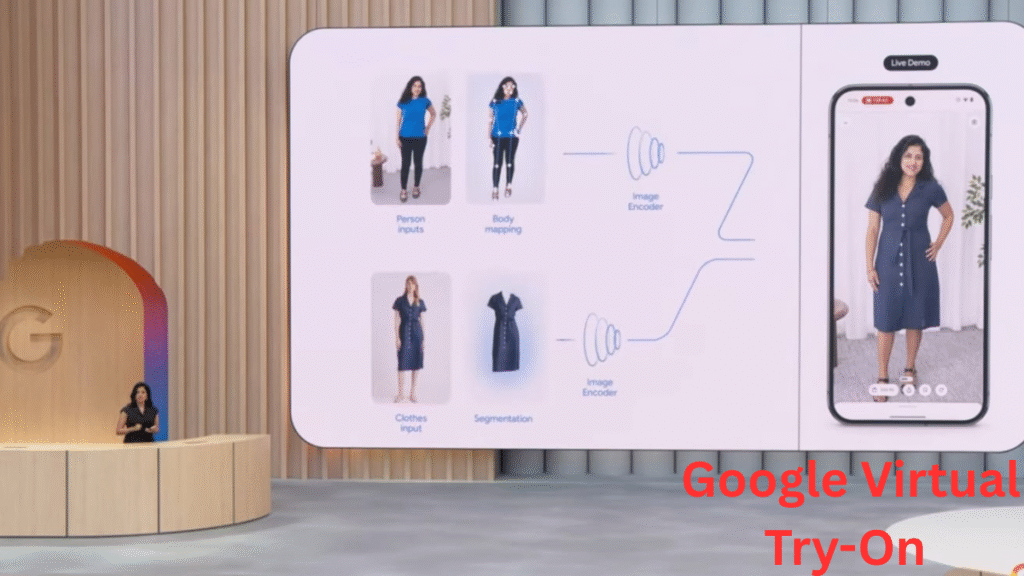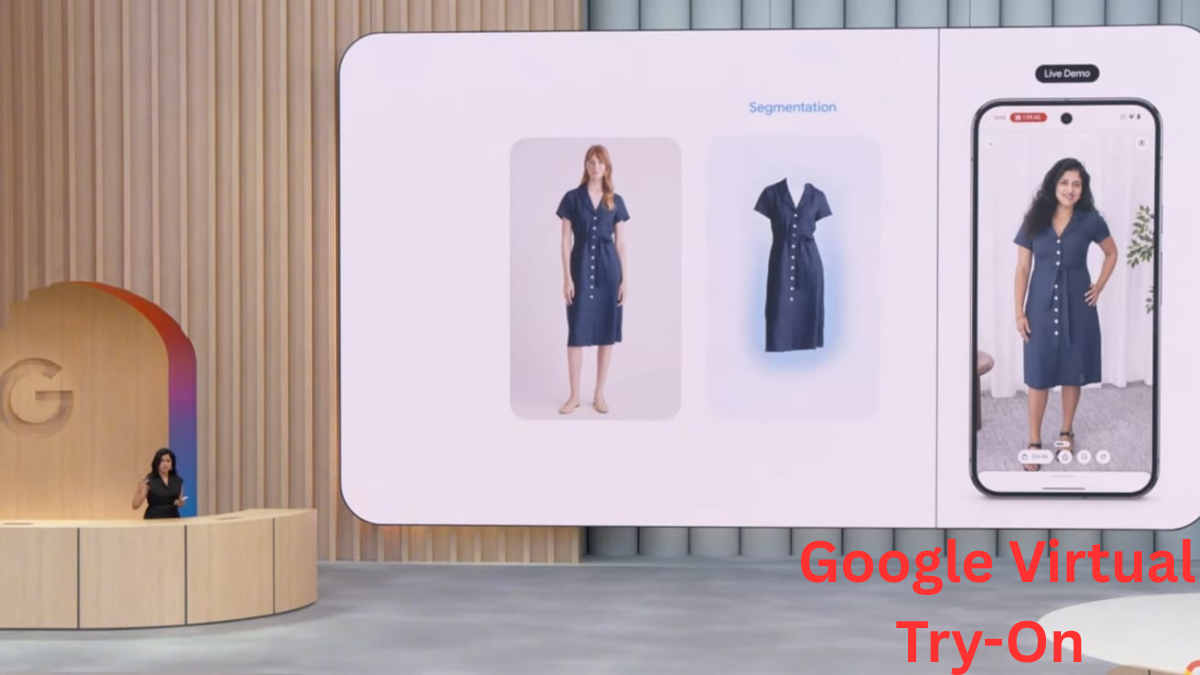Google has officially entered the virtual fashion arena with a groundbreaking announcement that could reshape how millions shop for clothes online. The search giant’s latest AI-powered Google virtual try-on feature promises to eliminate the guesswork from digital clothing purchases, leveraging cutting-edge machine learning algorithms to create photorealistic previews of how garments will actually look on individual shoppers.This isn’t just another tech experiment. It’s a strategic assault on the $62 billion online fashion return crisis.
Google’s AI Shopping Revolution Takes Center Stage
The Mountain View-based company quietly rolled out its Google virtual try-on technology across Google Shopping, integrating seamlessly with search results and merchant listings. Users can now virtually “wear” clothing items from thousands of participating retailers without leaving Google’s ecosystem, marking a significant shift in how the company approaches e-commerce.
But what sets Google’s approach apart from existing solutions?
The answer lies in their proprietary “Generative AI Model for Google Virtual Try-On,” which utilizes advanced diffusion technology to create remarkably realistic clothing simulations. Unlike competitors who rely primarily on basic overlay techniques, Google’s system actually understands fabric physics, accounting for how different materials drape, stretch, and interact with various body types.
Senior Product Manager at Google Shopping, Jennifer Liu, explained during the recent announcement: “We’re not just showing you how clothes might look—we’re showing you how they will look, with unprecedented accuracy that considers everything from fabric weight to lighting conditions.”
The Technology Behind Google’s Fashion AI

Google virtual try-on leverages their extensive experience in computer vision and machine learning, technologies honed through years of developing Google Lens and image recognition systems. The AI model was trained on millions of clothing items and body measurements, creating a sophisticated understanding of garment behavior across diverse demographics.
The process begins when users upload a photo or use their device’s camera. Google’s AI instantly analyzes body proportions, posture, and even subtle details like shoulder positioning. Then comes the complex computational work—the system calculates how specific garments will conform to the user’s unique physique.
What makes this particularly impressive is the speed. Results appear in under three seconds.
The technology doesn’t stop at basic fitting simulations. Google Virtual Try on considers brand-specific sizing variations, fabric elasticity, and even how certain colors appear under different lighting conditions. This level of detail addresses one of online shopping’s most persistent frustrations: the disconnect between product photos and reality.
Integration Across Google’s Shopping Ecosystem
Unlike standalone virtual try-on apps, Google’s solution integrates directly into search results, making the technology accessible to the platform’s billions of daily users. When searching for clothing items, users now see a “Try On” button alongside traditional product information.
The feature extends beyond simple Google Shopping integration. YouTube creators can now embed virtual try-on experiences within fashion videos, allowing viewers to instantly try featured items. Google Images also supports the technology enabling users to virtually try clothing found in visual searches.
This comprehensive integration strategy positions Google uniquely in the competitive virtual fashion space, leveraging their dominant search position to drive adoption.
Retailer Partnerships and Market Impact
Google has secured partnerships with major fashion retailers including H&M, Anthropologie, EVERLANE and Loft, with thousands more brands expected to join the platform throughout 2025. These partnerships provide access to detailed product specifications and 3D models necessary for accurate virtual try-on experiences.
The economic implications are staggering. Fashion retailers typically experience return rates between 20-40%, with poor fit being the primary culprit. Early testing of Google’s virtual try-on technology shows promise in reducing these returns by up to 50%.
Maria Santos, Head of Digital Innovation at H&M, shared her enthusiasm: “Google’s virtual try-on technology has already shown remarkable results in our pilot programs. Customers report significantly higher confidence in their purchases and we’re seeing corresponding reductions in return rates.”
Privacy and Data Protection Measures
Given the sensitive nature of body measurement data, Google has implemented robust privacy protections for their virtual try-on feature. The company emphasizes that uploaded photos are processed locally on users’ devices whenever possible, with temporary cloud processing used only for complex calculations.
Personal images and body measurements are automatically deleted after processing and users maintain complete control over their data. Google has also committed to never using virtual try-on data for advertising purposes, addressing concerns about potential misuse of biometric information.
These privacy measures reflect growing consumer awareness about data protection in AI-powered services.
Challenges and Current Limitations
Despite impressive capabilities, Google’s virtual try-on technology faces several challenges. Accuracy varies across different body types, with some users reporting less reliable results for plus-size or petite fits. The system also struggles with certain fabric types, particularly sheer materials or items with complex layering.
Lighting conditions in user photos can significantly impact results. Google recommends using well-lit environments and avoiding harsh shadows for optimal accuracy.
Additionally, the technology currently works best with fitted garments. Loose, flowing clothing items like oversized sweaters or maxi dresses present ongoing challenges for accurate virtual representation.
Competitive Landscape and Market Response
Google’s entry intensifies competition in the virtual fashion space, where companies like Amazon, Snapchat and specialized platforms like Zeekit have already established footholds. However, Google’s massive user base and search integration provide significant advantages.
Industry analysts predict Google’s virtual try-on could accelerate mainstream adoption of the technology, potentially making virtual fitting rooms as common as product reviews.
Future Developments and Expansion Plans
Google hints at exciting future developments, including augmented reality integration for real-time virtual try-ons and AI-powered styling recommendations based on users’ existing wardrobes. The company is also exploring expansion into accessories, shoes and beauty products.
Machine learning improvements continue advancing the technology’s accuracy and speed, with Google’s research teams working on better fabric simulation and diverse body type representation.
As Google’s virtual try-on technology evolves, it promises to fundamentally transform online fashion shopping, making the digital experience as reliable and satisfying as visiting physical stores. The future of fashion retail is increasingly looking virtual, personalized, and remarkably sophisticated.
